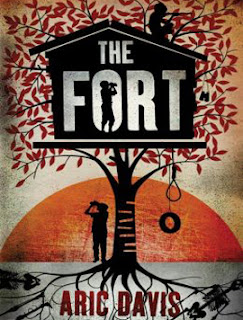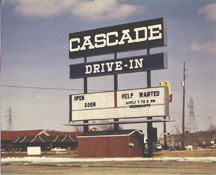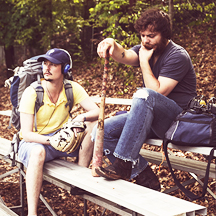A formal education is nearly out of the question. Space is limited at far-off schools and only a few students from the rice villages are admitted about once every six months. To even be eligible for the lottery selection, the child has to score in the top 95 percentile after their eighth birthday.
With such competitive pressure to be selected, it isn't very surprising that the librarian would rebuff a video rumored to be the first glimpse of alien life. She considered it a waste of time, especially when when a line of children were waiting to study. Bingwen saw it differently. He believed it was real.
Earth Afire chronicles The First Formic War.
In Earth Unaware, the first installment in a prequel trilogy set 100 years before Ender's Game, Card and Johnston dispense with first contact by painting a vivid depiction of life aboard the El Cavador, a deep space mining ship in the Kuiper Belt. The second book, Earth Afire, pauses just long enough to introduce Bingwen, a brilliant young boy who becomes bound to another heroic character.
The video he sees also sets up where Card and Johnston pick up the Earth Unaware cliffhanger. Victor Delgado had been sent ahead of the El Cavador to warn earth about the impending invasion.
 Although his chances were improbable, he endured several months of space travel crammed in a mining transport that wasn't designed to carry people. And yet, his mission might have been for naught. Much like the librarian peering over a young child's shoulder in China, Luna and the rest of Earth think his footage is faked — a spook vid produced to entertain and alarm children like Bingwen.
Although his chances were improbable, he endured several months of space travel crammed in a mining transport that wasn't designed to carry people. And yet, his mission might have been for naught. Much like the librarian peering over a young child's shoulder in China, Luna and the rest of Earth think his footage is faked — a spook vid produced to entertain and alarm children like Bingwen. Much like Earth Unaware, Earth Afire slowly draws together various characters and tightens the various character threads from several threads as new threads are introduced. The mechanism makes the entire story flow with usual ease, right up until the end with an equally abrupt break. It's patently clear that the trilogy really isn't a trilogy but rather one book broken up into installments.
Much like Earth Unaware, Earth Afire slowly draws together various characters and tightens the various character threads from several threads as new threads are introduced. The mechanism makes the entire story flow with usual ease, right up until the end with an equally abrupt break. It's patently clear that the trilogy really isn't a trilogy but rather one book broken up into installments.Orson Scott Card And Aaron Johnston solidify their collaboration with a cohesive second act.
One of several notable shifts is the decision to mostly trade up the perspective of MOPS leader Wit O'Toole for the half-Maori New Zealander Mazer Rackham. Rackham (portrayed by Ben Kingsley in the upcoming movie) is an unconventional hero who has made varied appearances throughout Card's books and stories. In the science fiction classic Ender's Game, he is Ender Wiggins' mentor. O'Toole tested him as a potential MOPS recruit in Earth Unaware, which was the most disjointed story thread.
In Earth Afire, Card and Johnston right the thread by making Rackham active near the action in China. This also gives him a unique opportunity to be within proximity of Bingwen and foreshadows what will become his natural affinity for children. Meanwhile, above the planet, Victor Delgado is forced to create an uneasy alliance with Lem Jukes, prodigal son and heir of the largest mining corporation in history.
As these two primary story threads contract, Earth Afire comes to life with Card and Johnston working as a singular voice. It is exceptionally clear that they found the right pace that will carry the story forward while moving into the political and military arenas where Card in particular has always felt at home.
Earth Afire By Orson Scott Card Lights Up 8.7 On The Liquid Hip Richter Scale.
Anyone who found some fault with Earth Unaware will likely feel much more satisfied with Earth Afire despite the same sudden break at the end. Many readers have mentioned that they didn't expect to like the second book as much as they did. And it leads me to believe that once all the pieces are in place, the entire prequel trilogy will become regarded as an important part of the entire saga.
Earth Afire, The First Formic War is available from Amazon. You can also find the novel on Barnes & Noble. The book can be downloaded for iBooks or as an audiobook from iTunes. The audiobook is read by eight different voices, which might even be an advantage over print in helping to further define various points of view. You can find our initial review of Earth Unaware here.
![Liquid [Hip]](https://blogger.googleusercontent.com/img/b/R29vZ2xl/AVvXsEjAFBQPqS7J0-rrttNoRYSsuwIePPZf4Nq6sqDioK1zzVQXJIQXKzq_NVNI4n6h3inuRQFBKOcJeZeSufkdHHIOxbSWyBjTjTxgKEQGyPzdwvkEEeECh4bI5YEGk4RWGUINSd7vulPQsCA/s1600-r/liquidhip.jpg)





























